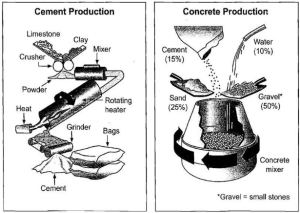Apakah kamu sedang mempersiapkan diri untuk ujian IELTS Academic? Jika iya, pasti kamu sudah familiar dengan Writing Task 1 yang terkadang menampilkan berbagai jenis diagram, termasuk flowchart atau diagram alur. Nah, pertanyaan yang sering muncul adalah bagaimana cara menggambarkan flowchart di IELTS dengan tepat dan mendapat skor tinggi?
Jangan khawatir! Artikel ini akan membantu kamu memahami strategi jitu untuk menjelaskan flowchart dengan mudah dan efektif. Mari kita bahas bersama-sama!
Apa itu Flowchart Task IELTS Writing 1?
Flowchart atau diagram alur dalam IELTS Writing Task 1 adalah jenis soal yang meminta kamu untuk mendeskripsikan sebuah proses atau rangkaian tahapan yang saling terhubung. Biasanya, flowchart menunjukkan bagaimana sesuatu diproduksi, bagaimana suatu sistem bekerja, atau tahapan-tahapan dalam siklus tertentu.
Contoh topik flowchart yang sering muncul:
- Proses pembuatan produk (seperti cokelat, kertas, atau semen)
- Siklus hidup makhluk hidup
- Proses daur ulang
- Sistem kerja mesin atau teknologi
Yang perlu kamu ingat, tugas kamu bukan hanya sekadar menyebutkan setiap langkah, tetapi juga menjelaskan bagaimana setiap tahapan saling terhubung dan mengalir dari satu ke yang lainnya. Untuk lebih memahami hal apa saja yang akan dinilai, cek 4 aspek penilaian IELTS Writing yang wajib diperhatikan.
Struktur Kalimat Penting untuk Menjelaskan Proses
Untuk menjelaskan flowchart dengan baik, kamu perlu menguasai beberapa struktur kalimat dan kosakata khusus. Berikut adalah yang paling penting:
1. Kalimat Pembuka (Introduction)
Gunakan kalimat pembuka yang jelas untuk memperkenalkan proses yang akan dijelaskan:
- “The flowchart illustrates the process of…”
- “The diagram shows how…”
- “The chart demonstrates the stages involved in…”
2. Kata Penghubung Urutan (Sequencing Words)
Untuk menunjukkan urutan tahapan, gunakan kata-kata berikut:
- Awal: First, Initially, To begin with, The process starts with
- Tengah: Then, Next, After that, Subsequently, Following this
- Akhir: Finally, Lastly, The process concludes with
3. Kata Kerja untuk Proses (Process Verbs)
Pilih kata kerja yang tepat untuk mendeskripsikan setiap tahapan:
- Transform, convert, process, produce, manufacture
- Heat, cool, mix, separate, filter, crush
- Transport, move, transfer, deliver
4. Passive Voice
Karena kamu menjelaskan proses, bukan siapa yang melakukannya, gunakan passive voice:
- “The materials are heated to 100°C”
- “The mixture is then cooled down”
- “The final product is packaged and distributed”
5. Kalimat Penutup
Akhiri dengan kalimat yang merangkum keseluruhan proses:
- “Overall, the process involves X main stages”
- “In conclusion, the production requires several complex steps”
3 Contoh Menjawab Flowchart
Mari kita lihat tiga contoh lengkap bagaimana menjelaskan flowchart dengan struktur yang benar:
Contoh 1: Proses Pembuatan Semen dan Beton

Source: IELTS Cambridge English Test Book
Soal: The diagrams show the stages and equipment used in the cement-making process, and how cement is used to produce concrete for building purposes.
Jawaban:
The diagrams illustrate the production process of cement and demonstrate how cement is subsequently used to manufacture concrete for construction.
The cement production process begins with crushing limestone and clay using a crusher to create fine powder. Initially, these crushed materials are mixed together in precise proportions. Following this, the mixture is fed into a rotating heater where it undergoes high-temperature treatment.
After heating, the heated mixture moves along a conveyor belt to reach a grinder, where it is processed into an even finer powder. This grinding stage produces the final cement product, which is then packaged into large bags ready for distribution.
The concrete production process is considerably simpler and involves combining four key ingredients. Cement accounts for 15% of the mixture, while water comprises 10%. Sand makes up 25% of the composition, and gravel forms the largest component at 50% of the total mixture.
These four materials are placed into a concrete mixer, where they are thoroughly combined through mechanical rotation. The mixer ensures all ingredients are evenly distributed, creating a homogeneous mixture.
Finally, the completed concrete mixture is ready for use in various construction applications, providing the essential building material for infrastructure projects.
Overall, cement production involves five distinct stages from raw materials to packaging, while concrete manufacturing requires the careful combination of four components in a concrete mixer.
Contoh 2: Siklus Hidup Katak

Source: IELTS Liz
Soal: The diagram shows the life cycle of a frog.
Jawaban:
The diagram illustrates the complete life cycle of a frog, showing the transformation process from eggs to adult amphibians through various developmental stages.
The cycle begins with adult frogs mating in aquatic environments such as ponds or streams. Following mating, the female frog lays clusters of eggs, called frogspawn, in shallow water. These gelatinous eggs are typically attached to aquatic plants or floating on the water surface to ensure protection and proper oxygenation.
After approximately 7-10 days, the eggs hatch and release small tadpoles into the water. These tadpoles are completely aquatic and breathe through gills, much like fish. Initially, tadpoles have long tails for swimming and feed primarily on algae and plant matter in their aquatic environment.
As the tadpoles continue to develop over several weeks, they undergo gradual physical changes. First, small hind legs begin to emerge from their bodies, followed by the development of front legs. During this stage, internal organs also start transforming, including the development of lungs to replace their gills.
Subsequently, the tadpoles enter the froglet stage, where they begin to absorb their tails while their legs become fully formed. At this point, they develop the ability to breathe both underwater through their skin and on land through their newly formed lungs.
Finally, the transformation is complete when the tail is fully absorbed and the young frog emerges from the water as a terrestrial adult. These adult frogs can live both on land and in water, feeding on insects and small organisms, and will eventually reach sexual maturity to continue the reproductive cycle.
Overall, the frog life cycle demonstrates a remarkable metamorphosis involving five main stages: egg, tadpole, developing tadpole, froglet, and adult frog, representing the transition from aquatic to semi-terrestrial life.
Tips Sukses Menulis Flowchart IELTS
- Baca diagram dengan teliti sebelum mulai menulis. Pastikan kamu memahami setiap tahapan dan hubungannya.
- Gunakan present tense dan passive voice karena kamu menjelaskan proses umum yang selalu terjadi.
- Variasikan kosakata untuk menghindari pengulangan kata yang sama.
- Jangan menambahkan opini atau informasi yang tidak ada dalam diagram.
- Perhatikan word count atau ingat target 150 kata minimum untuk Writing Task 1.
- Latih timing dengan alokasikan maksimal 20 menit untuk Task 1.
Nah, itulah strategi lengkap untuk menjelaskan flowchart di IELTS Writing Task 1! Dengan memahami struktur yang tepat dan berlatih dengan berbagai contoh, kamu akan lebih percaya diri menghadapi soal jenis ini. Ingat, kunci sukses adalah konsistensi dalam berlatih dan memahami pola penulisan yang benar.
Mau jago jawab soal flowchart di IELTS Writing Task 1?
Latihan terarah bareng tutor bisa bikin pola penulisanmu lebih runtut dan sesuai standar IELTS.
Di kelas IELTS Writing ElevaU, kamu bisa fokus latihan dari level Reguler yang interaktif sampai Exclusive 1-on-1 buat bimbingan intensif.
Masih ragu pilih kelas? Yuk konsultasi gratis dengan admin sekarang dan temukan program yang pas buat target skor IELTS-mu!


